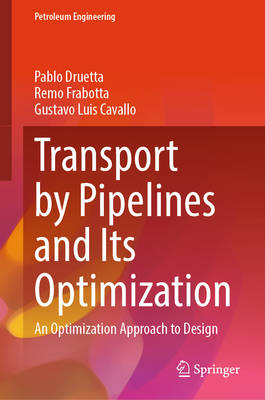
- Afhalen na 1 uur in een winkel met voorraad
- Gratis thuislevering in België
- Ruim aanbod met 7 miljoen producten
- Afhalen na 1 uur in een winkel met voorraad
- Gratis thuislevering in België
- Ruim aanbod met 7 miljoen producten
Transport by Pipelines and Its Optimization
A Sustainable Approach to the Design
Pablo Druetta, Remo Frabotta, Gustavo Luis CavalloOmschrijving
This textbook introduces pipeline design, one of the most efficient techniques for mass and energy transport available today. The global economy heavily relies on pipelines. However, designing a pipeline is more complex than it might seem; it involves many technical and economic factors that must work together to create an optimized system.
The book begins with basic concepts of pipelines, including a description of the materials used, heat transfer between the system and medium, and the main components of pumping and compression stations, which are vital for the subsequent chapters. It then presents a simple yet detailed overview of these factors and introduces a mathematical methodology that combines them to deliver an optimized pipe design, minimizing costs and reducing energy consumption. The book also covers the transient verification of this design using well-known balance equations and material property relationships for both incompressible and compressible fluids, to validate the initial design. Finally, the book explores the analysis of multiphase pipelines, where the goal is to transport a particular material (e.g., solid) using a different medium (e.g., air or water).
Specificaties
Betrokkenen
- Auteur(s):
- Uitgeverij:
Inhoud
- Aantal bladzijden:
- 325
- Taal:
- Engels
- Reeks:
Eigenschappen
- Productcode (EAN):
- 9783031665653
- Verschijningsdatum:
- 11/12/2024
- Uitvoering:
- Hardcover
- Formaat:
- Genaaid
- Afmetingen:
- 155 mm x 235 mm
- Gewicht:
- 688 g

Alleen bij Standaard Boekhandel
Beoordelingen
We publiceren alleen reviews die voldoen aan de voorwaarden voor reviews. Bekijk onze voorwaarden voor reviews.












